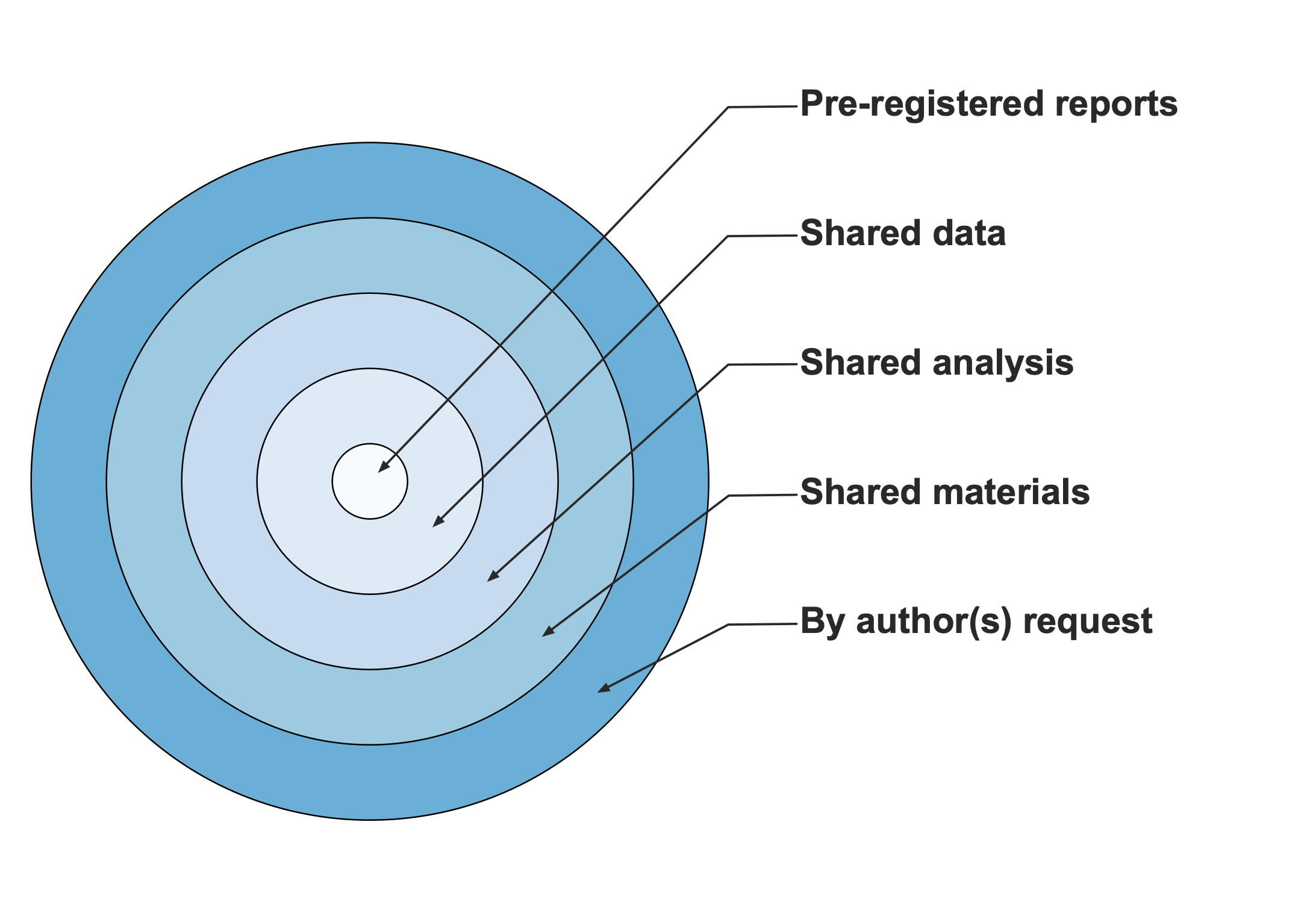1 Principles
Let us begin with addressing two fundamental questions:
- What is Open Science?
- What are the principles of Open Science?
This is a large and ongoing area of investigation that we cannot hope to cover in this brief chapter, so we recommend readers to view the cited publications to learn more.
1.1 Definitions
“Open Science is transparent and accessible knowledge that is shared and developed through collaborative networks” (Vicente-Saez and Martinez-Fuentes 2018).
Investigators can approach Open Science in a layered, gradient approach with increasing levels of transparency and accessibility (Bowman and Keene 2018):

1.2 Importance
Why does transparency, accessibility, collaboration, and reproducibility matter? Below is a brief non-exhaustive list of potential benefits:
- Increased effectiveness of the scientific method
Open science practices advance innovation and accelerate discoveries by allowing scientists to build on (and replicate) existing work more efficiently and effectively. Open Science fosters global collaboration by enabling researchers from different institutions, disciplines, and countries to work together.
- Increased trust in scientific work
Open science practices help to reduce errors, building trust and confidence in findings across the research and public domains.
- Increased benefit to the public and common good
Open Science aligns with ethical principles by promoting fairness, accountability, and knowledge sharing, ensuring that research contributes to the common good.
1.3 Summary
Open Science is an umbrella term that encompasses many components of how scientific knowledge is shared, accessed, and developed. Following Open Science principles has potential benefits to accelerating scientific innovation, increasing trust, and benefiting the common good.
The following chapters will list tools and resources that accomplish various goals of Open Science with a particular emphasis on the science of Parkinson’s disease.